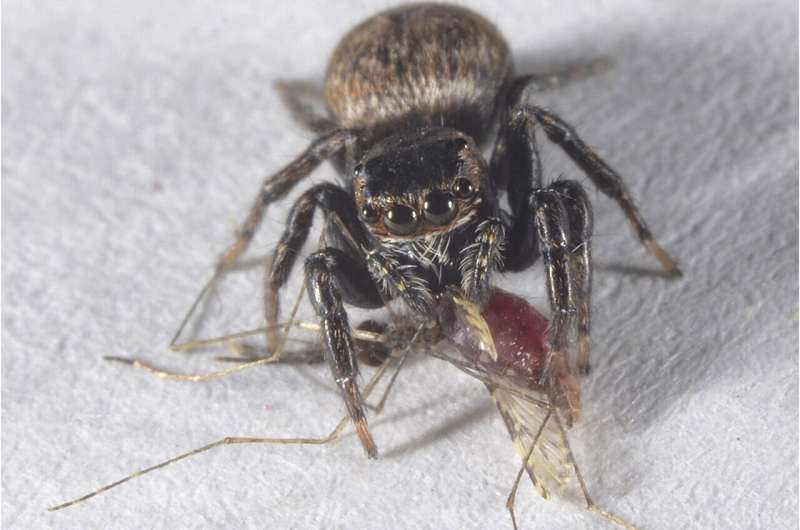Inside the mind of a spider

For a creature that—legs and all—might be no larger than a pencil eraser, spiders continue to surprise researchers with their cognitive abilities.
Lisa Taylor, a University of Florida entomologist, has spent her career studying arachnids. She says understanding how spiders think is just one of the unknowns that drives her research.
"They're such tiny animals, with an even tinier brain, and a sensory system that we don't quite understand," she said.
This curiosity led Taylor and two international collaborators—Fiona Cross from the University of Canterbury in New Zealand and Robert Jackson from the International Centre of Insect Physiology and Ecology in Kenya—to examine the dietary preferences of an East African jumping spider known scientifically as Evarcha culicivora. Their findings are newly published in the journal Animal Behaviour.
"My collaborators spent years watching these spiders in the field and noticed that they were feeding almost exclusively on mosquitoes," said Taylor, a research assistant scientist in the UF/IFAS entomology and nematology department. "This isn't something that's typical of all spiders—to specialize in one type of prey."
As they observed the spiders' behavior, another trend emerged: The spiders seemed to be tracking the mosquitoes and targeting those with bright red abdomens, a tell-tale sign (to humans, at least) of a recently fed mosquito.
For the experiment, performed in Kenya, the researchers provided mosquitoes either red-dyed sugar water—which caused their abdomens to mimic a recent blood meal—or gray-dyed sugar water, to represent no-blood mosquitoes. They strongly preferred the red-bellied mosquitoes.
"They didn't have blood odor to rely on for their decisions, either," Taylor pointed out. "Using sugar water meant that smell was not a factor for the spiders to choose their prey."
In the long run, Taylor said, such research can help inform matters like mosquito control. But in the short-term, she adds, it's just another piece of the puzzle for spider research.
"This is a localized example, but it's a good study system to help us understand how animals can make decisions with really tiny brains and a completely different sensory system than ours," Taylor said. "It reveals broader patterns in the natural world."
More information: Lisa A. Taylor et al, Blood-red colour as a prey choice cue for mosquito specialist predators, Animal Behaviour (2022). DOI: 10.1016/j.anbehav.2022.04.003
Journal information: Animal Behaviour
Provided by University of Florida



















